Virus Protector Kit (3-pack)
One huge thing that we’ve learned recently is that your own immune system determines how sick you get. Whether vaccinated or not vaccinated, your immune response to viruses is the determining factor. Protecting your own immune system for a robust response is priority number 1. And the Virus Protector Kit does an excellent job of this. Get yours today.
Frequently Bought Together
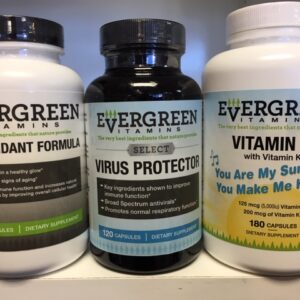
This item: Virus Protector Kit (3-pack)
EverGreen Anti Aging Kit (3 bottles)
Country Life Zinc Lozenges 23mg 60 chewable cherry flavor
Lively Vitamin Solar Power Vitamin D3 with K2
More Info
Viruses are going to be with us for a long time. Protect yourself and your family now. Your immune system is the whole key to surviving.
- Virus Protector:Quercetin and Zinc together are key: Quercetin is a naturally occurring zinc ionophore, therefore helping bring zinc into the cell. Once Zinc is inside the cell it is very effective at blocking the virus from replication. It does this by blocking the replication machinery of the virus. The key is to get zinc into the body before you are exposed to the virus. And most Americans are deficient in zinc.Quercetin is a powerful immune booster and broad-spectrum antiviral. Quercetin is a bioflavonoid that has been used for thousands of years as an anti-histamine and for respiratory disorders. It has no side effects and no toxicity. Quercetin is one of only three natural products found to inhibit Virues. Elite Nutrition recommends 500-1000mg daily.
- Antioxidant Formula: The Antioxidant Formula is the best, most powerful antioxidant formula made. It is the strongest anti-aging, immune system enhancing formulation available. It contains 10 nutrients that boost your own immune system with many anti-virals. See below for the listing of the ingredients and what they do.
Elite Nutrition recommends 2 capsules a day.
3. Vitamin D:
Having low levels of Vitamin D in the blood are associated with a 20 times higher death rate. It is recommended to bring up Vitamin D levels as soon as possible, before one is exposed to the Virus. 10,000 IU for 2-4 weeks is recommended then back down to 5,000 IU daily.
Vitamin D strengthens immune function, thus allowing the host body to combat the virus more effectively. It also suppresses inflammatory processes. There is plenty of data showing Vitamin D is an important component in the prevention and treatment of influenza and upper respiratory tract infections. Most all Americans are grossly deficient in Vitamin D.
Vitamin K2 drives calcium into the bone and out of the arteries. K2 also works with Vitamin D.
Here are some of the ingredients found in the Virus Protector Kit.
1.Is Quercetin Quell Effective Against Infection?
Research has already demonstrated that quercetin is a powerful immune booster and broad-spectrum antiviral. As such, it may be useful both for prevention and treatment of infection.
As noted in a 2016 study8 in the journal Nutrients, quercetin’s mechanisms of action include the inhibition of lipopolysaccharide (LPS)-induced tumor necrosis factor α (TNF-α) production in macrophages.
TNF-α is a cytokine involved in systemic inflammation, secreted by activated macrophages, a type of immune cell that digests foreign substances, microbes and other harmful or damaged components. Quercetin also inhibits the release of pro-inflammatory cytokines and histamine by modulating calcium influx into the cell.9
According to this paper, quercetin also stabilizes mast cells and has “a direct regulatory effect on basic functional properties of immune cells,” which allows it to inhibit “a huge panoply of molecular targets in the micromolar concentration range, either by down-regulating or suppressing many inflammatory pathways and functions.”10
How Quercetin Inhibits Viral Infection
One of the most well-studied attributes of quercetin, however, is its antiviral capacity, which has been attributed to three main mechanisms of action:
- Inhibiting the virus’ ability to infect cells
- Inhibiting replication of already infected cells
- Reducing infected cells’ resistance to treatment with antiviral medication
Research11 funded by the U.S. Department of Defense, published in 2007, found it lowers your risk of viral illness following extreme physical stress, which might otherwise undermine your immune function and render you more susceptible to infections.
Cyclists who received a daily dose of 1,000 mg of quercetin in combination with vitamin C (which enhances plasma quercetin levels12,13) and niacin (to improve absorption) for five weeks were significantly less likely to contract a viral illness after bicycling three hours a day for three consecutive days, compared to untreated controls. While 45% of the placebo group got sick, only 5% of the treatment group did.
In another study14 funded by the U.S. Defense Advanced Research Projects Agency (DARPA), published in 2008, animals treated with quercetin were challenged with a highly pathogenic H1N1 influenza virus. Again, the treatment group had significantly lower morbidity and mortality than the placebo group.
2. Antioxidant Formula:
The Antioxidant Formula is the best most powerful antioxidant formula made. It is the strongest anti-aging, immune system enhancing formulation available. It is designed to be taken in addition to your Multi-Vitamin. It contains:
Alpha-Lipoic Acid (ALA) 100mg: A powerful antioxidant-both on its own and as a recycler of Vitamin E and Vitamin C. It can restore the antioxidant properties of these vitamins after they have neutralized free radicals. ALA is soluble in both water and fat and can therefore move into all parts of cells to deactivate free radicals. ALA has been used for three decades in Europe to treat peripheral nerve degeneration and to help control blood sugar levels in people with diabetes. It can play an important role in the prevention and treatment of chronic degenerative diseases such as diabetes and cardiovascular disease. ALA is known as a metabolic antioxidant, because without it, cells cannot use sugar to produce energy.
Coenzyme Q10 (CoQ10) 100mg: CoQ10 is a fat soluble antioxidant that is structurally similar to vitamin E. It plays a crucial role in the generation of cellular energy, enhances the immune system, increase circulation, has antiaging effects and is beneficial to the heart. It is well known in treating congestive heart failure and high blood pressure. It is believed that as many as 75 percent of people over fifty may be deficient in CoQ10. A lack of CoQ10 can lead to cardiovascular disease, without enough of it; the heart cannot circulate the blood effectively.
Resveratrol: 100mg: Resveratrol is a powerful antioxidant found in Red Wine. It is often referred to as the “miracle” antioxidant. The dosage of Resveratrol in the Antioxidant Blend has the equivalent to 25 bottles of red wine. Resveratrol has been clinically shown to expand the lives of laboratory animals by more than 30%. Resveratrol accomplishes this huge feat by turning on your “survival genes”—the same ones that switch on during calorie restriction. These genes kick in your body’s production of sirtuins, which are proteins that play multiple roles in health and longevity. They facilitate DNA repair and maintain genome stability, protect against oxidative stress, and reduce inflammation.
Astaxanthin: 4mg: Astaxanthin is by far the most powerful antioxidant when it comes to free radical scavenging. It is a carotenoid that makes salmon pink. It prevents the damaging effects of sunlight (potent UVB absorber) and radiation in our environment. Astaxanthin crosses the blood-brain barrier AND the blood-retinal barrier (beta carotene and lycopene do not), which brings antioxidant and anti-inflammatory protection to your eyes, brain and central nervous system and reducing your risk for cataracts, macular degeneration, blindness, dementia and Alzheimer’s disease. Astaxanthin can actually help to prevent sunburn, and protect you from the damaging effects of radiation (i.e., flying in airplanes, x-rays, CT scans, etc.)
Grape Seed Extract and Pine Bark Extract: 100mg each: These are the two main sources of Oligomeric Proanthocyanidins (OPC’s) which are naturally occurring substances present in a variety of food and botanical sources. Clinical tests show that grape seed extract and pine bark extract may be up to fifty times more potent than vitamin E and C in terms of antioxidant activity. OPC’s have shown to protect the brain and spinal nerves against free radical damage. They have also been shown to support the immune system, slow aging, reduce allergy symptoms, and protect the liver.
Vitamin C: 500mg: Vitamin C is a water soluble antioxidant and has been shown to be the first line of antioxidant defense in plasma against many different kinds of free radicals. This vitamin also guards against atherosclerosis by preventing damage to artery walls. It helps to prevent cancer, protects against infection, and enhances immunity.
Vitamin E: 200IU: Vitamin E is a powerful antioxidant that prevents the oxidation of lipids (fats). Fat oxidation has been implicated in the process that leads to atherosclerosis. Vitamins E is fat soluble and, since cell membranes are composed of lipids, it effectively prevents the cells’ protective coatings from becoming rancid as a result of the assault of free radicals. Vitamin E also improves oxygen utilization, enhances immune response, prevents cataracts caused by free radical damage, and may reduce the risk of heart disease. It naturally thins the blood and has been shown to prevent strokes. The natural form (d-alpha-tocopherol) is superior to the synthetic version (dl-alpha-tocopherol).
Selenium: 100mcg: A vital antioxidant that protects the heart and immune system by working closely in combination with Vitamin E. Selenium has also been found to function as a preventive against the formation of certain types of tumors. One study found that men who took 200 mcg of selenium daily over a ten year period had half the risk of developing lung, prostate, and colorectal cancer.
What are Antioxidants? Antioxidants are natural compounds that help protect the body from harmful free radicals. Free Radicals are atoms that contain at least one unpaired electron. If an electron is unpaired, another atom or molecule can easily bond with it, causing a chemical reaction. Because they join so readily with other compounds, free radicals can effect dramatic changes in the body, and they can cause a lot of oxidative damage. Some examples of free radical processes are muscle soreness, cancer, and heart disease. Antioxidant s neutralize free radicals by binding to their free electrons.
Antioxidants;
- Boost the immune system. A high intake of antioxidant nutrients appears to be especially protective against cancer.
- Have strong anti-aging properties. Free radical damage is thought by scientists to be the basis for the aging process.
- Play a beneficial role in the prevention of disease, including heart disease.
Antioxidants work synergistically in giving protection against free radical damage, so it is better to take smaller doses of several different antioxidants than a large amount of only one.
3. Vitamin D
The Importance of Vitamin D
There is plenty of data showing Vitamin D is an important component in the prevention and treatment of influenza26 and upper respiratory tract infections.
While vitamin D does not appear to have a direct effect on the virus itself, it strengthens immune function, thus allowing the host body to combat the virus more effectively. It also suppresses inflammatory processes. Taken together, this might make vitamin D quite useful against certain viruses.
A robust immune function is required for your body to combat the virus, but an over-activated immune system is also responsible for the cytokine storm we see in some virus infections that can lead to death.
What we want is a smart immune system. An immune system that takes care of the virus but doesn’t put us into an inflammatory condition that could put us on a ventilator.
Vitamin D Supplementation Cuts Respiratory Infection Rates
He goes on to cite research29 published in 2017 — a meta-analysis of 25 randomized controlled trials — which confirmed that vitamin D supplementation helps protect against acute respiratory infections. Studies have also shown there’s an apparent association between low vitamin D levels and susceptibility to viral infections such as influenza.
Living at northerly latitudes means you get the least amount of sunlight during winter months, resulting in lower vitamin D levels, and one hypothesis is that the seasonality of the flu is related to the fact that most people have lower vitamin D levels in the winter than in the summer.
For example, research30 published in 2009 pointed suggests fatality rates during the 1918-1919 influenza pandemic were influenced by season, with greater numbers of people dying during the winter than the summer.
It remains to be seen whether this seasonality applies to modern viruses as well. If it does, it could well be that higher vitamin D levels strengthen immune function enough to where the virus cannot overtake the system.
The 2017 meta-analysis31 also made another important discovery. When they dug deeper into the data from each of the more than 11,000 participants, they found that it was the daily or weekly supplementation of vitamin D that had the greatest protective effect in those with the lowest vitamin D levels.32
Those with severe vitamin D deficiency who took a daily or weekly supplement cut their respiratory infection risk in half. Those with higher baseline levels also lowered their risk, albeit to a lesser extent. The acute administration of high bolus doses of vitamin D, on the other hand, had no significant impact on infection risk.
This supports the recommendation to maintain an optimal vitamin D level year-round. According to data from GrassrootsHealth’s D*Action studies, the optimal level for health and disease prevention appears to be between 60 nanograms per milliliter (ng/mL) and 80 ng/mL, while the cutoff for sufficiency appears to be around 40 ng/mL.
In one GrassrootsHealth analysis,33 those with a vitamin D level of at least 40 ng/mL reduced their risk of colds by 15% and flu by 41%, compared to those with a level below 20 ng/mL.
Disclaimer: This article is not intended to claim that any of these substances treat, prevent or cure coronavirus infections. These are merely candidates which are being studied for their potential. Currently there is no drug, no vaccine, no herb, no molecule on the planet which has been proven to treat virus infections.
Evergreen Vitamins
There are no question found.
Research
Abián, O., Ortega-Alarcón, D., Jiménez-Alesanco, A., Ceballos-Laita, L., Vega, S., Reyburn, H., Rizzuti, B., & Velázquez‐Campoy, A. (2020). Structural stability of SARS-CoV-2 3CLpro and identification of quercetin as an inhibitor by experimental screening. International Journal of Biological Macromolecules, 164, 1693 - 1703. https://doi.org/10.1016/j.ijbiomac.2020.07.235.
O. Abián, David Ortega-Alarcón, A. Jiménez-Alesanco, L. Ceballos-Laita, S. Vega, H. Reyburn, B. Rizzuti and A. Velázquez‐Campoy. "Structural stability of SARS-CoV-2 3CLpro and identification of quercetin as an inhibitor by experimental screening." International Journal of Biological Macromolecules, 164 (2020): 1693 - 1703. https://doi.org/10.1016/j.ijbiomac.2020.07.235.

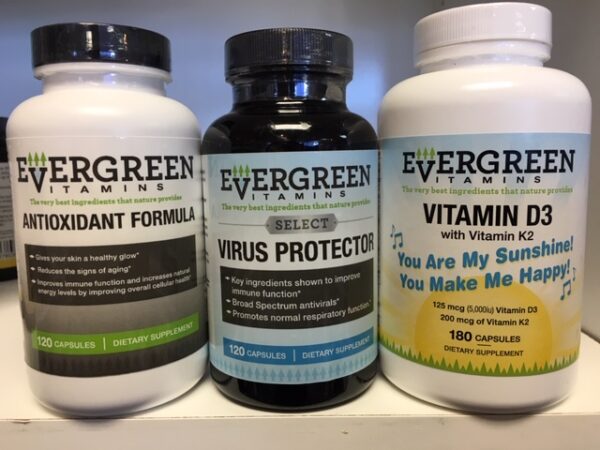
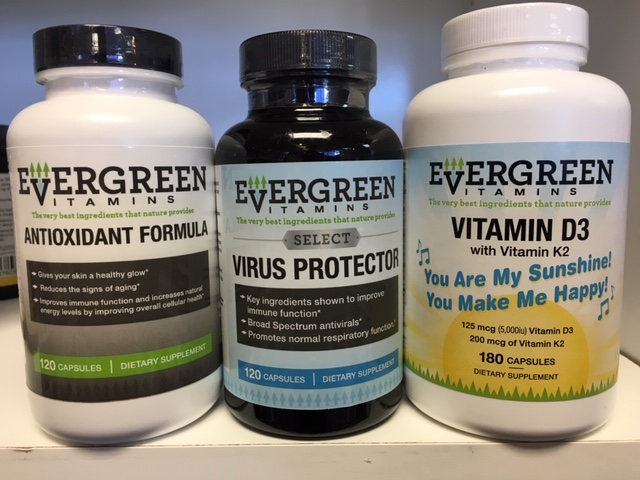
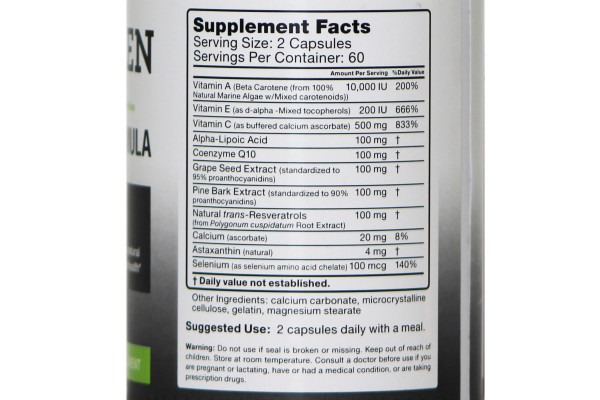

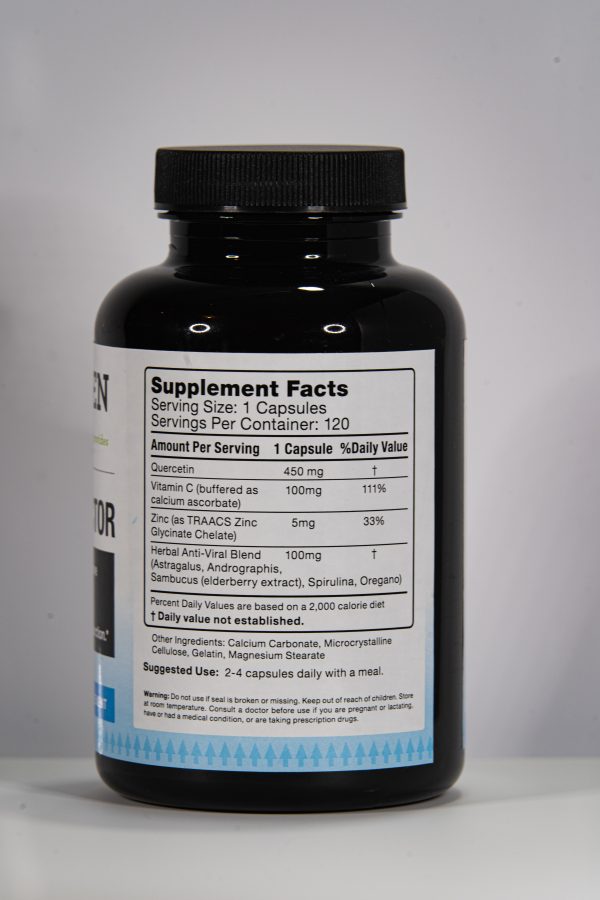

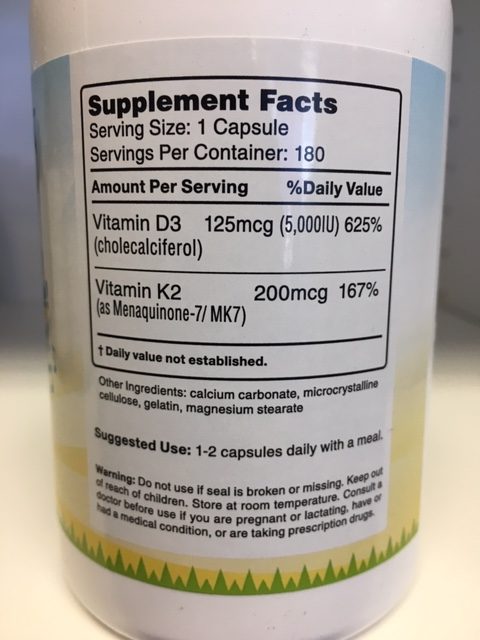
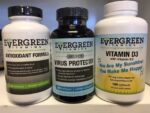
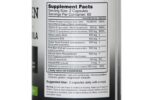
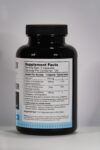
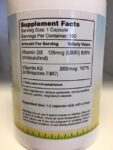

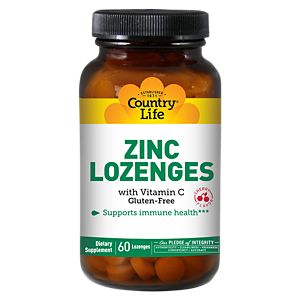
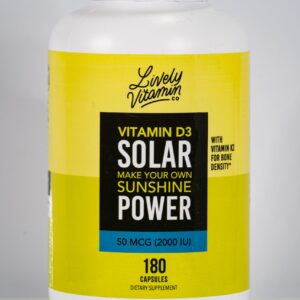
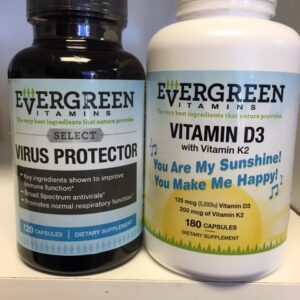
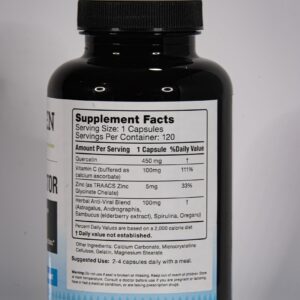

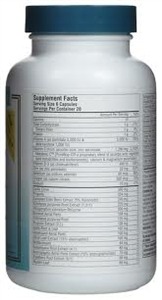

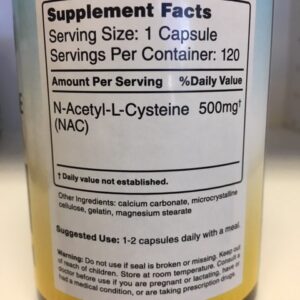
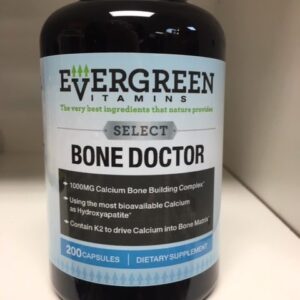
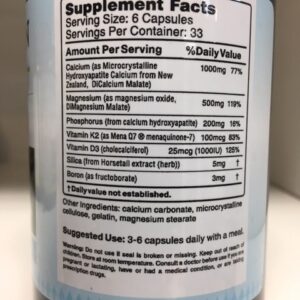
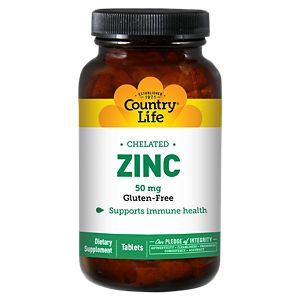
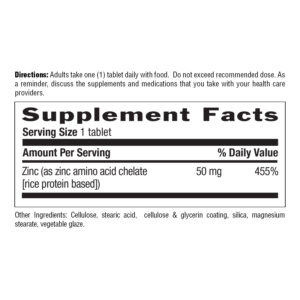

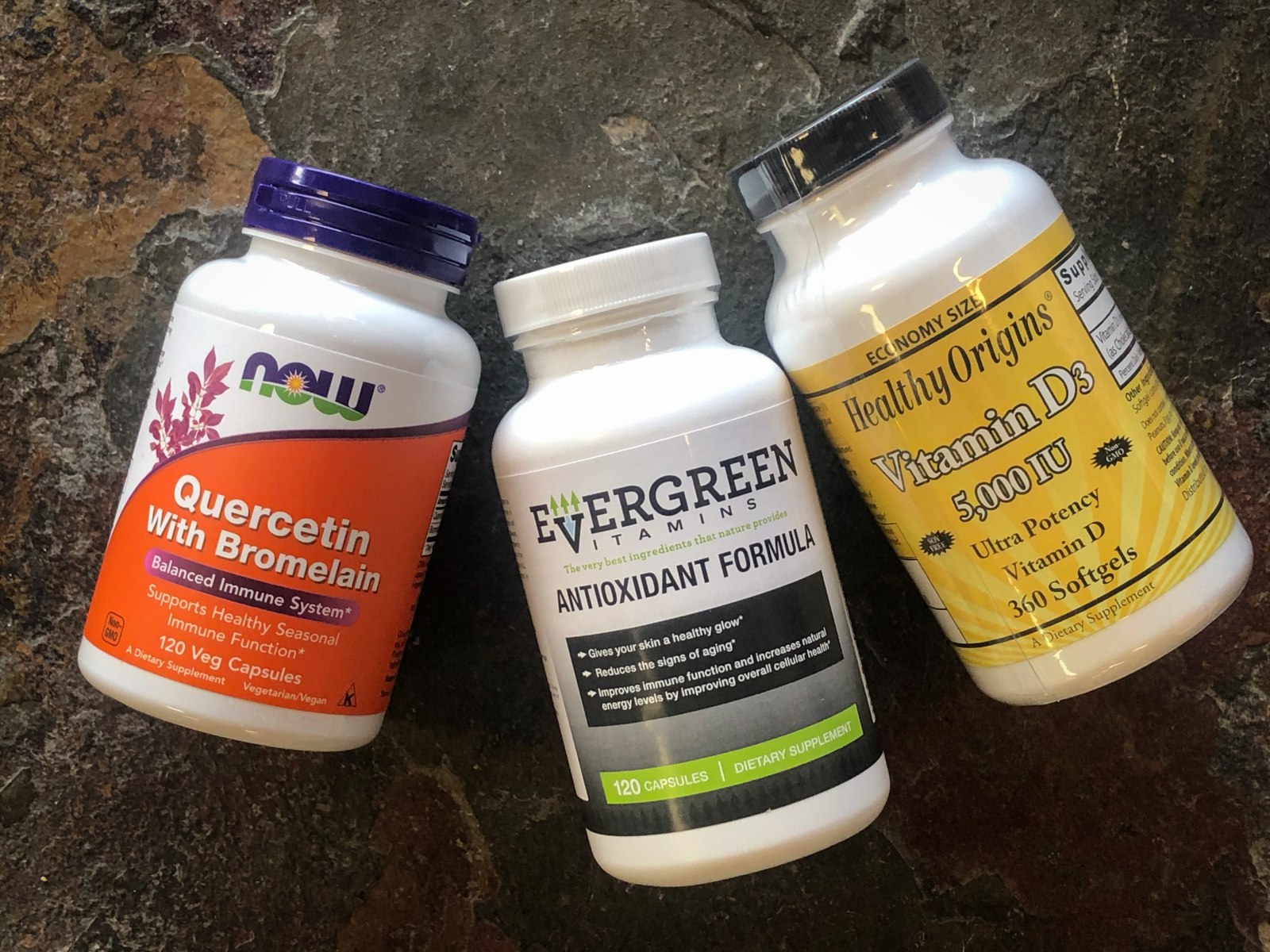
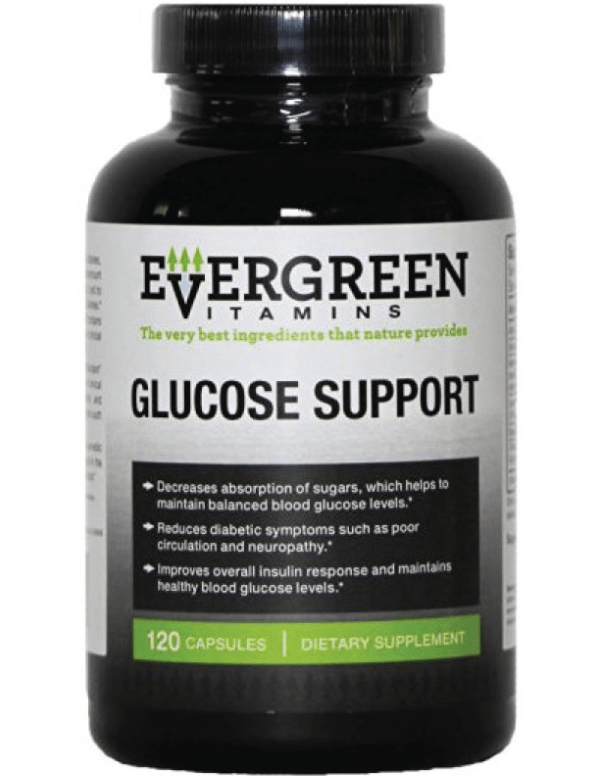
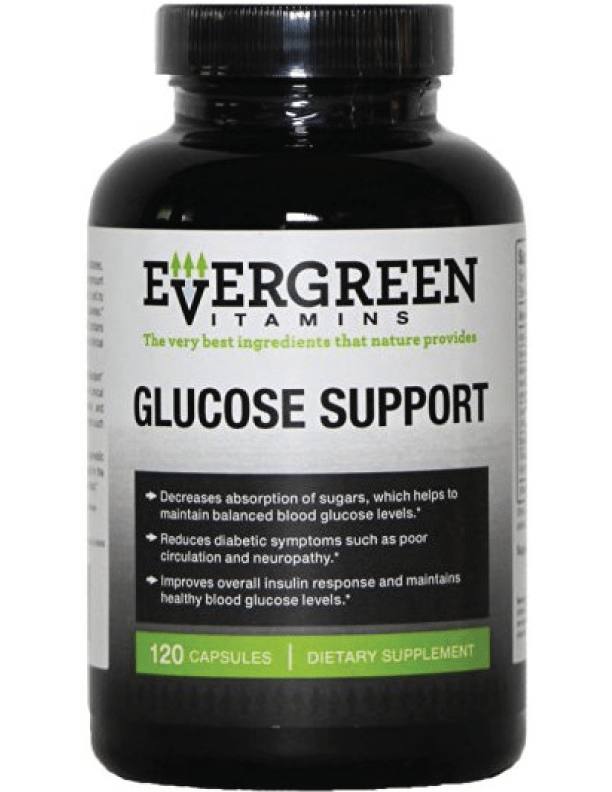
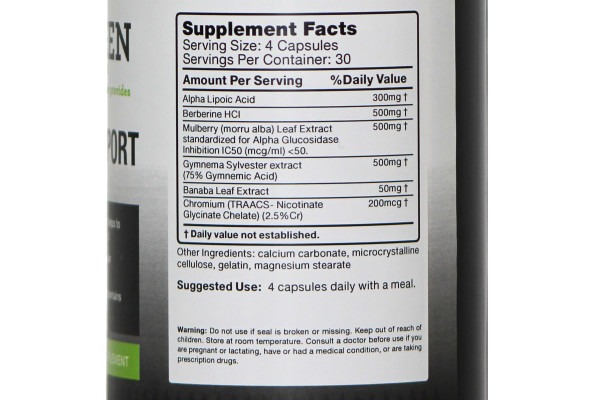
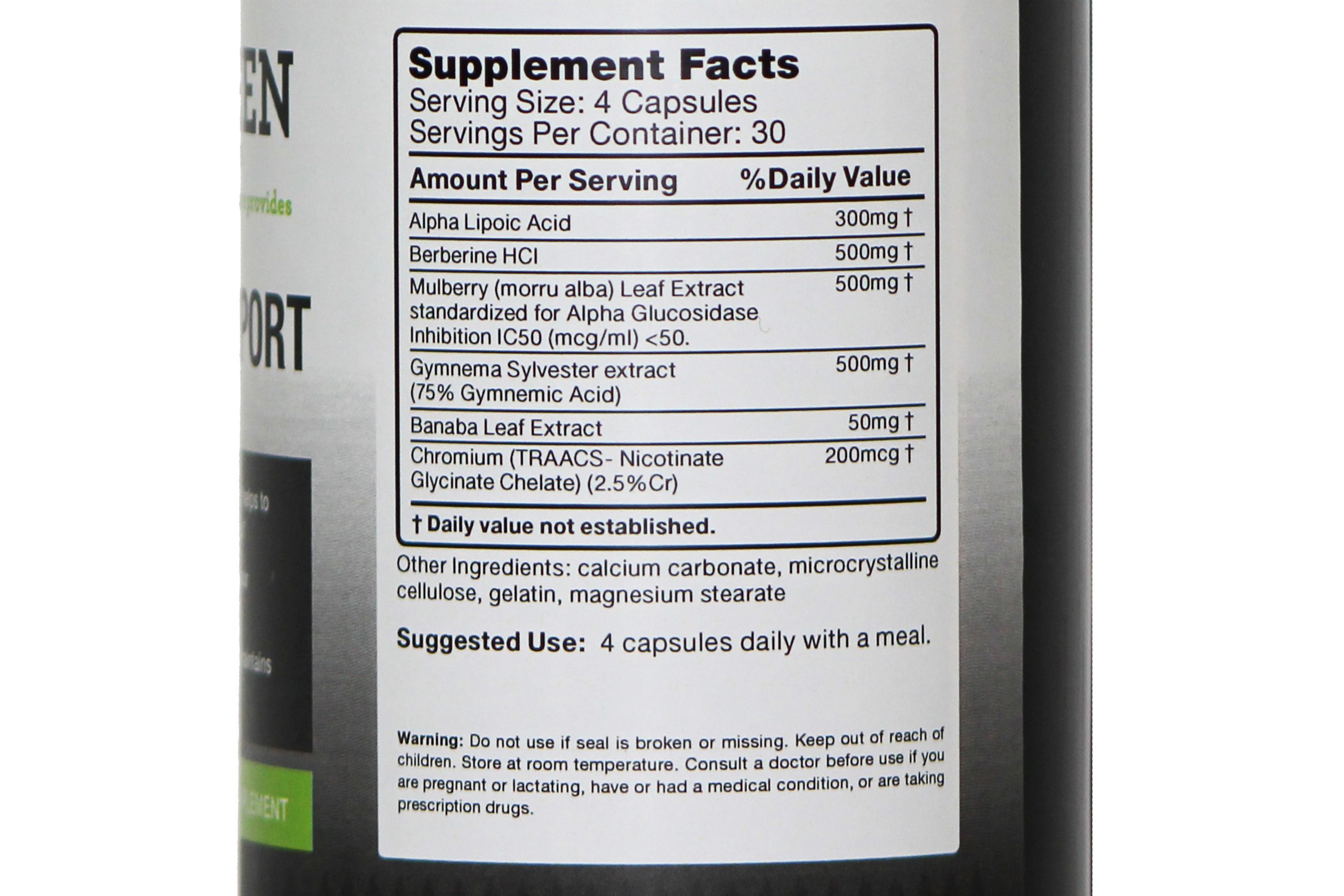
Reviews
There are no reviews yet